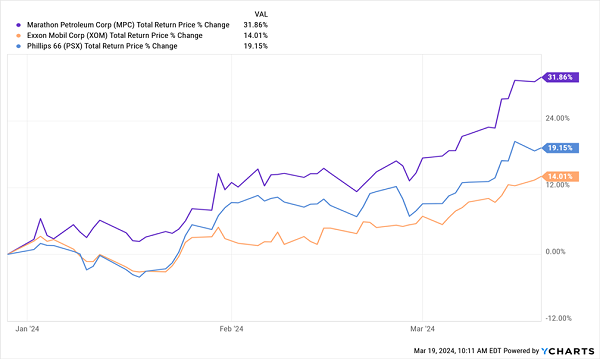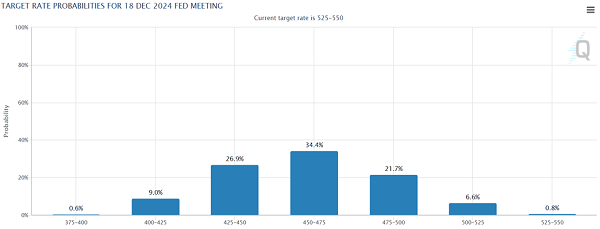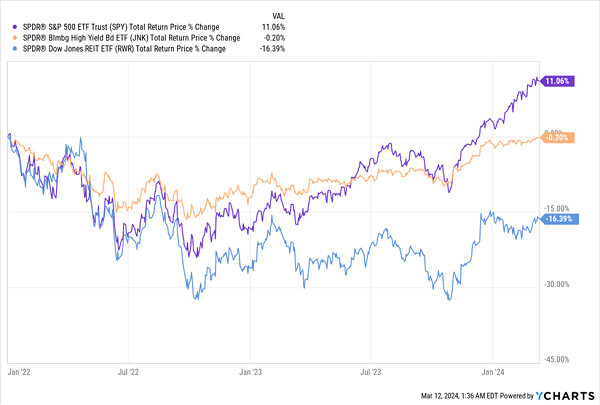This 6.9% Dividend Has Soared in ’24 (Its Next Crash Is Close)
Michael Foster, Investment StrategistUpdated: March 21, 2024
2024 may be remembered as the year the stock-market recovery “stuck.” While 2023 resuscitated stocks from their 2022 doldrums, it’s been 2024 that got the indices to hold above all-time highs.
Also, unlike 2023, this year’s gains are increasingly broad-based, with nine out of the 11 sectors of the S&P 500 up so far.
The biggest winner? The energy sector, which has been bolstered by particularly strong gains from Marathon Petroleum (MPC), Exxon Mobil (XOM) and Phillips 66 (PSX).
Energy Gains Across the Board

Is this an opportunity, especially for income-hungry investors? After all, energy stocks’ payouts can be massive, with pipelines offering yields well over 10% in many cases.… Read more



